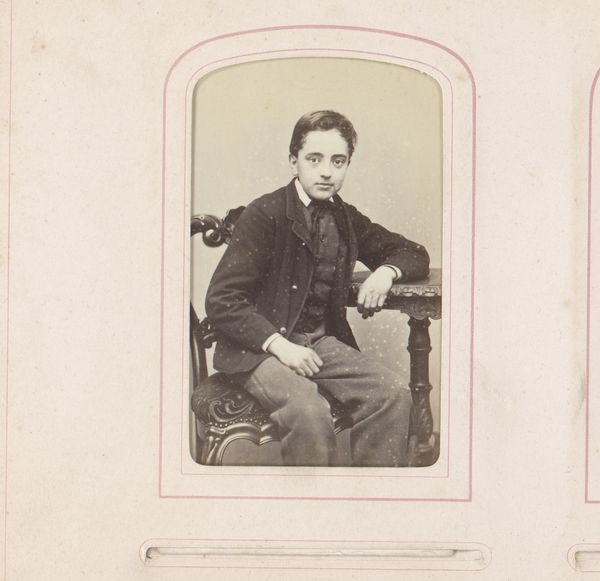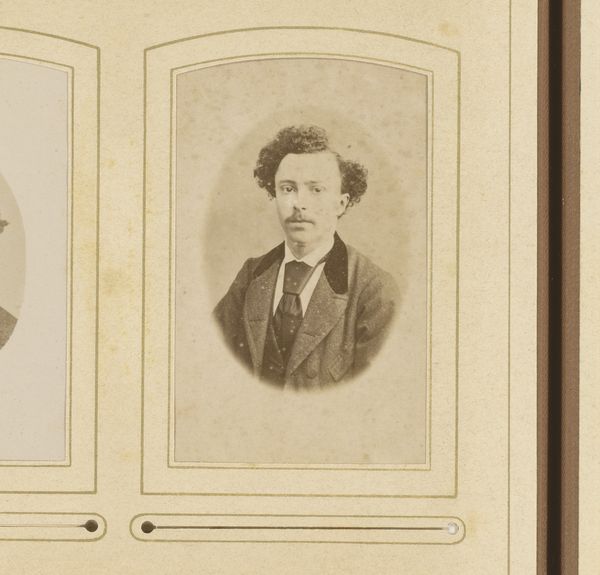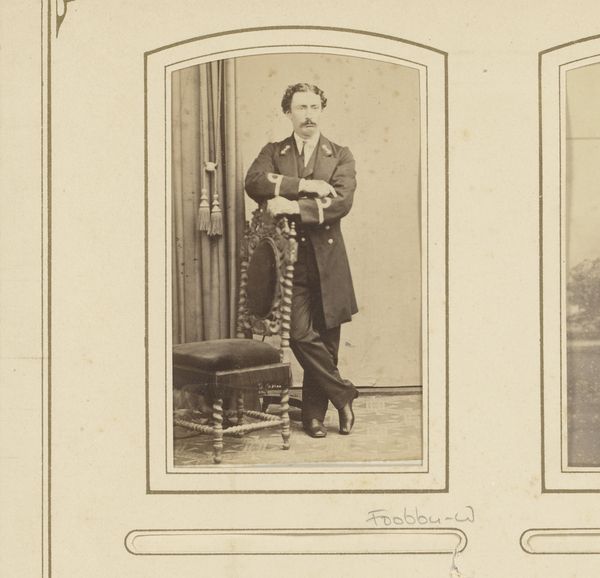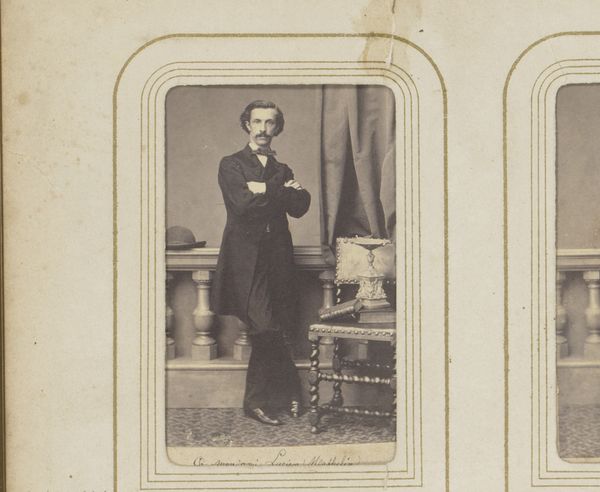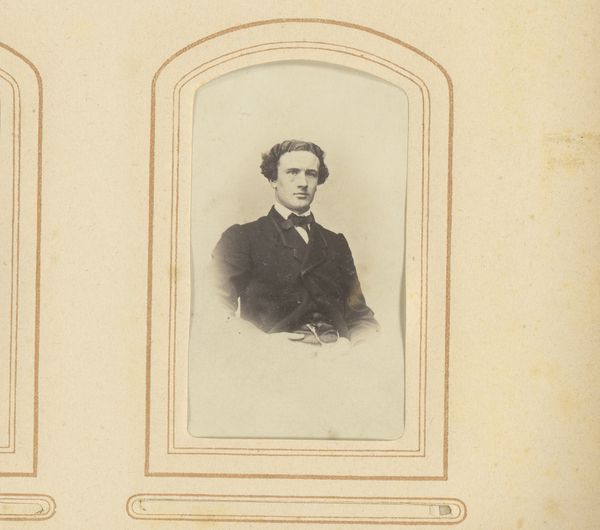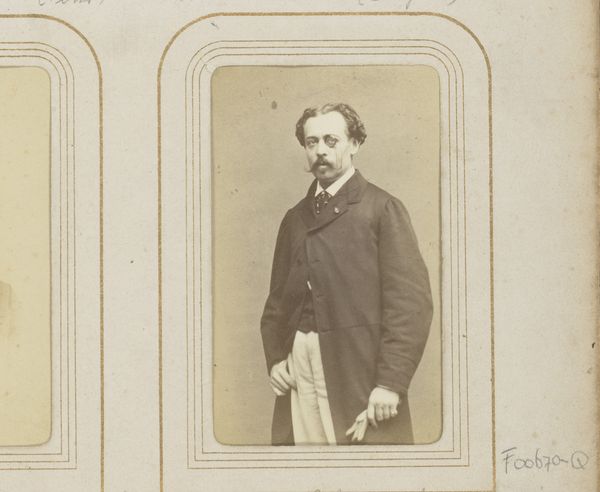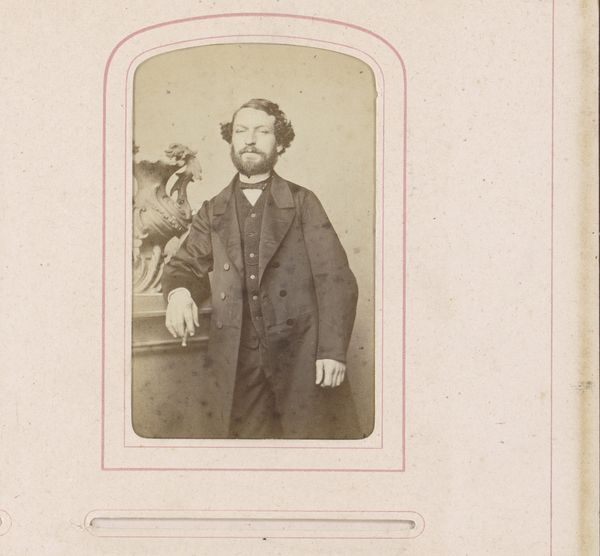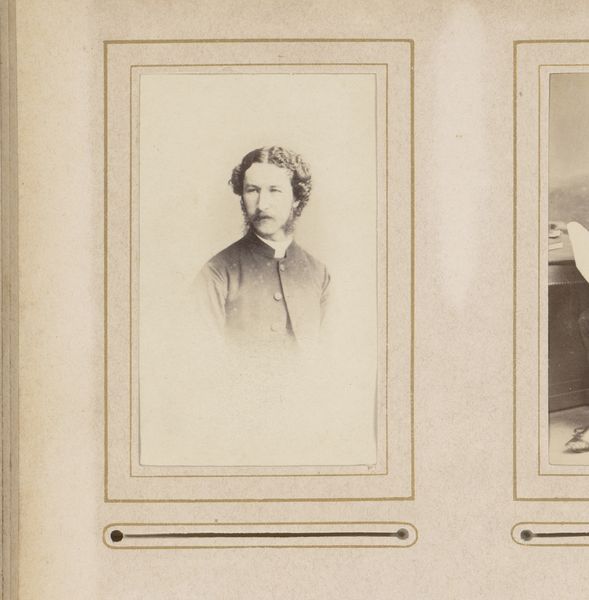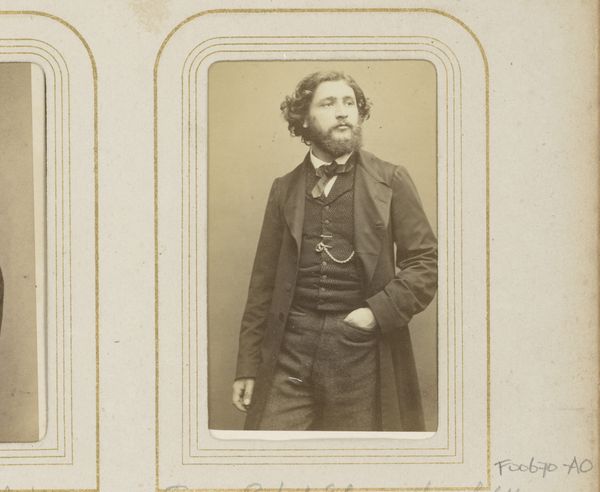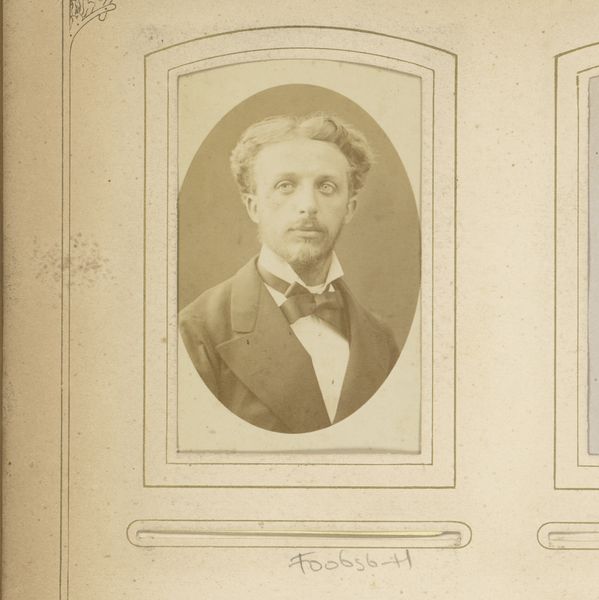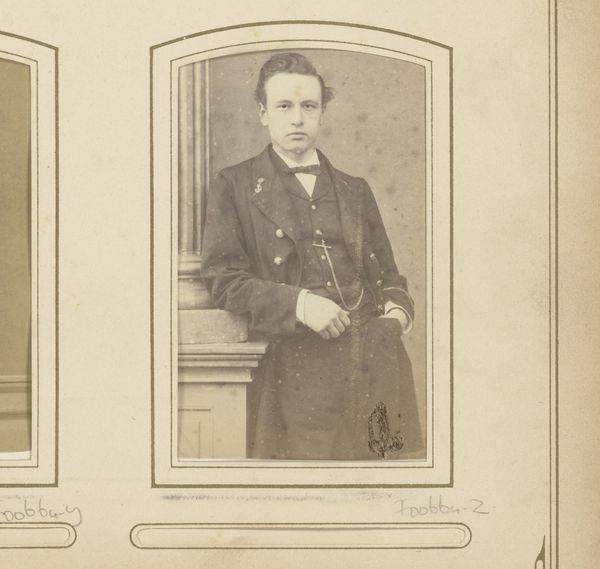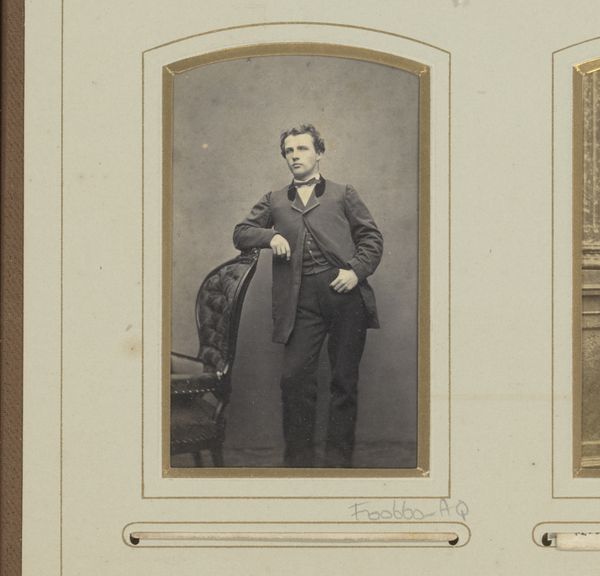
Dimensions: height 84 mm, width 51 mm
Copyright: Rijks Museum: Open Domain
Curator: Looking at this image, I’m immediately struck by the palpable moodiness. Something about the cross-armed pose, that furrowed brow… It feels very Byronic hero. Editor: That's a great observation. What we're seeing is a portrait of Olivier Metra, taken by Georges Mathurin Legé in 1867. This 19th-century photograph offers an intriguing window into the cultural constructions of masculinity and celebrity during that period. Curator: Celebrity indeed! Tell me more about Metra. Editor: Olivier Metra was a celebrated French composer and conductor of light music, known for his waltzes and polkas. This portrait captures him at the height of his fame, when musicians held significant cultural cachet. Think about how celebrity culture intersects with gender; what expectations were placed on men like Metra to cultivate a certain persona? Curator: Interesting point. And, to be honest, he's definitely serving up some serious Romantic angst here. His attire looks somewhat informal; more the "artist" than the refined "gentleman". I wonder if this image attempts to subvert social conventions and stereotypes about musicians... Editor: I think you're right to probe at those social constraints, and how the art both reifies and challenges them. Legé certainly had a point of view in constructing this image of Metra for public consumption. Think about what's not being said in his expression. Or perhaps think about the audience: what messages would they interpret from his dress, or demeanor? How does photography democratize visual representation at the time? Curator: Exactly! This wasn't just a simple snapshot; the photographer consciously chose this specific pose, lighting, and composition. Considering that Metra had significant cultural visibility at the time, one could see how this portrait may challenge or subvert some of those rigid gendered cultural expectations, maybe promoting an ideal image of a brilliant, tortured artist… Editor: Perhaps it did. Anyway, reflecting on the photograph again, its ability to evoke this specific moment from history and prompt us to re-examine what those gazes can mean... I will continue musing over this, I think. Curator: It definitely opens new windows, revealing the multifaceted dimensions of identity and representation within the fascinating cultural and political landscape of the era.
Comments
No comments
Be the first to comment and join the conversation on the ultimate creative platform.
